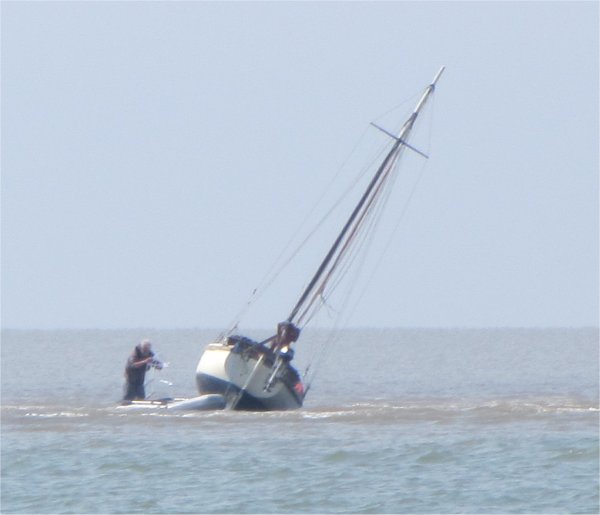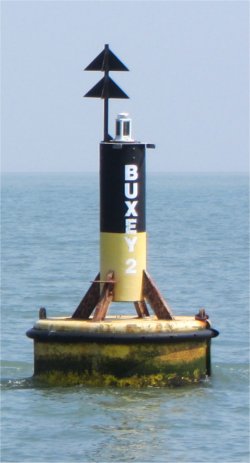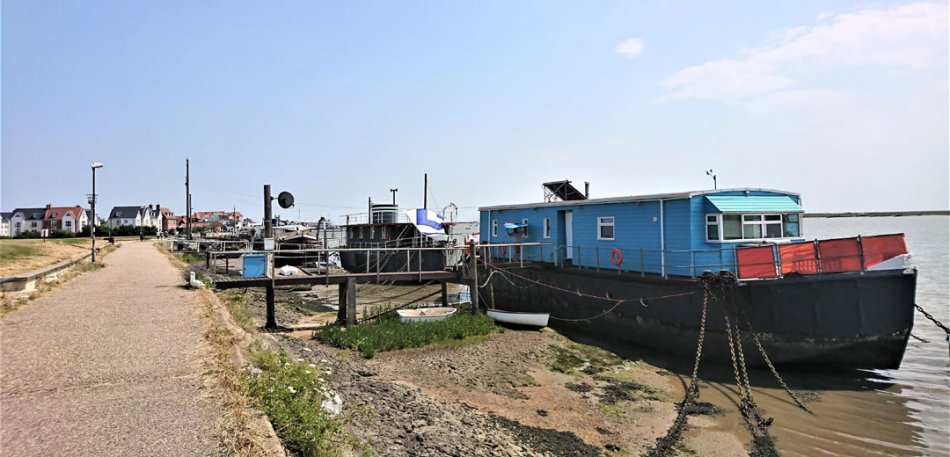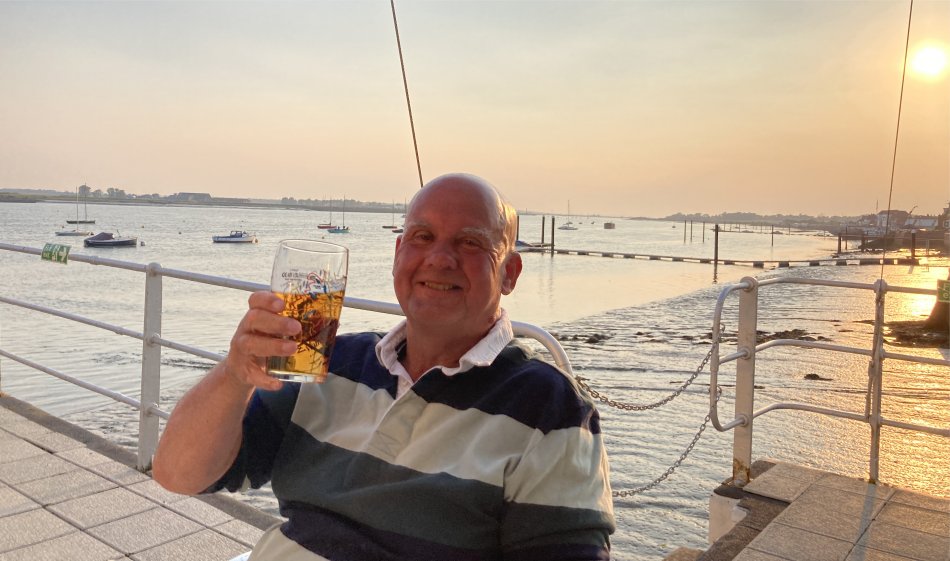 Yacht Aground on Foulness Sand |
We headed out to the Wallet Spitway and Swin Spitway, the sea being a bit lumpy with wind over tide, and took a long loop around the Whitaker and Inner Whitaker buoys in order to pick up the long channel into the River Crouch.
At the beginning of this long passage up to Burnham-on-Crouch, I noticed a yacht aground on Foulness Sand, part of Shoeburyness Outer Firing Danger Area. The long, fin-keeled boat lay on its side, and the owner was walking on the sands up to his knees in water, appearing to be tinkering with a deflated inflatable. He was not raising an alarm on VHF, nor was he waving his arms for help, so I presumed he was just waiting for the tide to lift him off.
We continued our long journey, observing seals sunbathing on the Buxey Sand and Foulness Sand on either side of us. The sun was hot, and there was not a stir of wind. We glided past the entrance to the River Roach, and down a channel amongst buoyed boats to Burnham-on-Crouch.
As we drifted past the sleepy town, its history with its old-world charm with listed buildings, boat-building yards and sailing clubs oozed out over the river towards us. This quiet, unspoilt riverside town is known as the 'Cowes of the East Coast'. According to the Domesday Book of 1086, Burnham was held in 1066 by a thane called Alward and 10 free men. After 1066 it was acquired by a Norman called Tedric Pointel of Coggeshall whose overlord was Ralph Baynard. Historically, it has benefited from its location on the coast - first as a ferry port, later as a fishing port known for its oyster beds, and most recently as a centre for yachting.
 Seals on Buxey Sand |
 Buxey 2 Buoy |
During the Second World War, Burnham was the training base for one of the first Commando battalions, led by Lt-Col Dunford-Slater. From 1943 to 1945 it was HMS St Mathew, base for up to 1400 sailors training on minor landing craft. The navy occupied the Royal Corinthian Yacht Club and a site at Creeksea. Unconnected with these activities, the area often witnessed Luftwaffe crashes and bomb, mine and V-weapon explosions - German parachute mines caused fatalities in the town and at nearby Southminster.
Incidentally, the Essex town is mentioned in the song "Billericay Dickie", by Ian Dury. This song alludes to Burnham's somewhat upmarket status in the county, with the invitation "Oh golly, oh gosh, Come and lie on the couch, With a nice bit of posh, From Burnham-on-Crouch."
It took no time at all to reach the marina. Here, smarty pants Rex expertly reversed Duonita into its berth for the night.
While paying the harbour master his dues, I mentioned the boat aground on the Foulness Sand, just in case somebody had reported the sailor missing. "No, he's probably been careless and run aground," he laughed. "The trick, when you're in that position, is to get a brush out and start brushing the bottom of the boat. Then it looks as though you deliberately grounded it so that you could brush the bottom of the boat."
Rex busied himself for a while changing the filters on his hearing aids; wax had got into them. Success, he could now hear the periodic booms from the firing-range on Foulness Sand. Then followed an extended, convoluted conversation covering esoteric topics such as: ear wax, ear impairments (Rex's mother lost 80% of her hearing in both ears after a doodlebug landed near her in London during World War II), grandparents, cousins and funerals. We concluded Rex's new hearing aid filters were now working correctly.
Later in the afternoon, a police helicopter flew over the marina, and started circling over an area between the marina and the nearby town of Burnham-on-Crouch. It circled for quite a while before coming to a halt above a particular point. We never did find out about that mystery.
In the evening, we had a leisurely stroll towards the town, passing a group of houseboats moored alongside the West Quay. Anne Marie, at the western end of the line, had been here the longest, arriving shortly after World War II. Her hull is made of military-grade reinforced concrete, the same material that was used for the defensive concrete 'pill-boxes' along the River Crouch. It was also used to build the other three concrete barges: Innisfree, Fathom and Mulberry. Concrete was chosen because steel was in short supply during the war. All four barges were built during World War II, and may well have seen some active service carrying military supplies. Mulberry and Fathom were rescued from their watery grave in the Crouch, Innisfree was brought round from Maldon.
The concrete boats are 'dumb barges', i.e. they have no propulsion system of their own, and have to be towed, sometimes four abreast. The longest barge, in the middle of the concrete barges, was the Hermione, a Dutch steel river barge, which was brought over from Holland in the 1990s. It once had an engine, and worked the European waterways.
 West Quay Houseboats |


